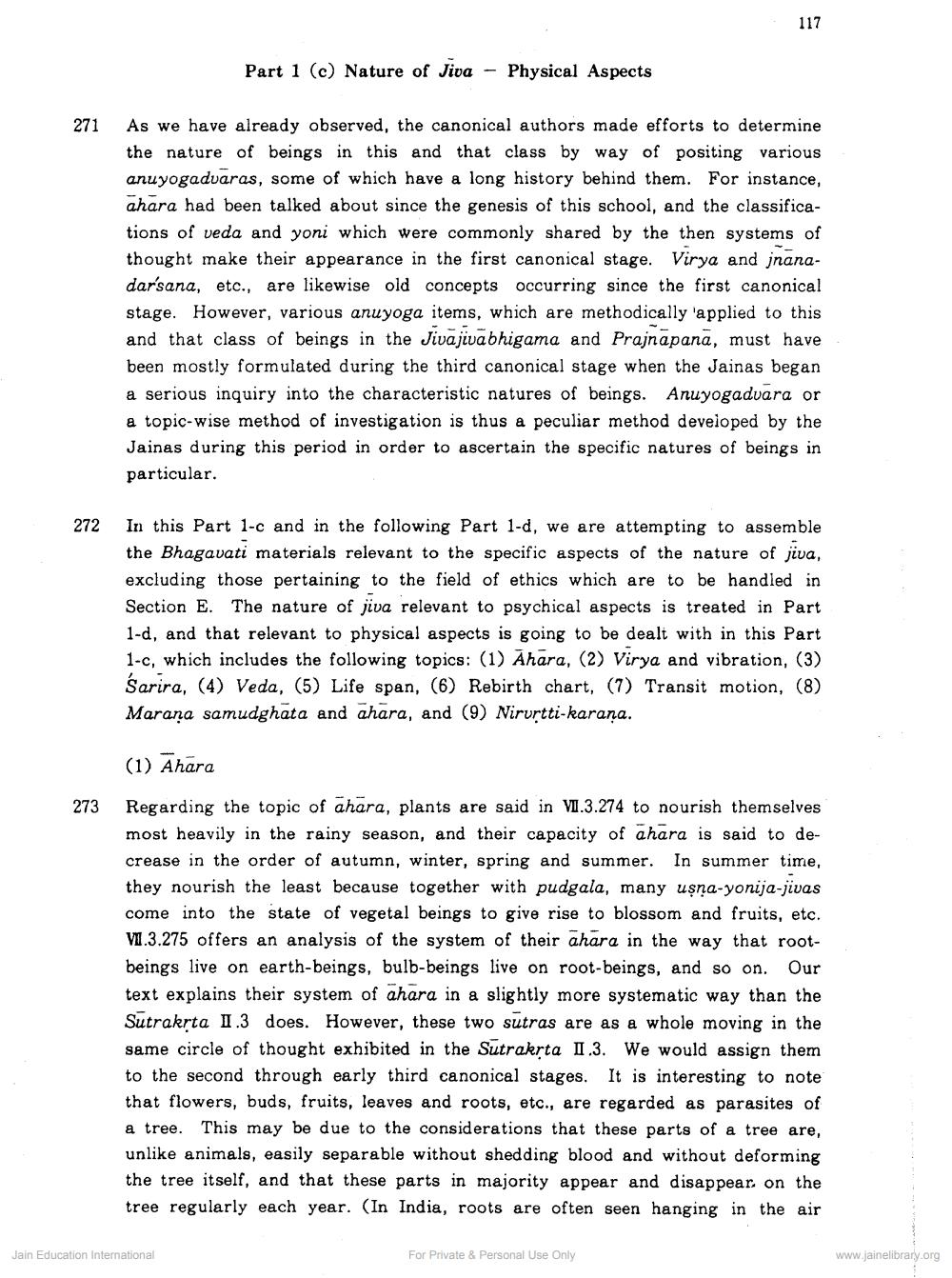________________
271
272
273
Part 1 (c) Nature of Jiva
-
Physical Aspects
Jain Education International
As we have already observed, the canonical authors made efforts to determine the nature of beings in this and that class by way of positing various anuyogadvaras, some of which have a long history behind them. For instance, ahara had been talked about since the genesis of this school, and the classifications of veda and yoni which were commonly shared by the then systems of thought make their appearance in the first canonical stage. Virya and jnanadar'sana, etc., are likewise old concepts occurring since the first canonical stage. However, various anuyoga items, which are methodically 'applied to this and that class of beings in the Jivajivabhigama and Prajnapana, must have been mostly formulated during the third canonical stage when the Jainas began a serious inquiry into the characteristic natures of beings. Anuyogadvara or a topic-wise method of investigation is thus a peculiar method developed by the Jainas during this period in order to ascertain the specific natures of beings in particular.
117
In this Part 1-c and in the following Part 1-d, we are attempting to assemble the Bhagavati materials relevant to the specific aspects of the nature of jiva, excluding those pertaining to the field of ethics which are to be handled in Section E. The nature of jiva relevant to psychical aspects is treated in Part 1-d, and that relevant to physical aspects is going to be dealt with in this Part 1-c, which includes the following topics: (1) Ahara, (2) Virya and vibration, (3) Sarira, (4) Veda, (5) Life span, (6) Rebirth chart, (7) Transit motion, (8) Marana samudghata and ahara, and (9) Nirvṛtti-karana.
(1) Ahara
Regarding the topic of ahara, plants are said in V.3.274 to nourish themselves most heavily in the rainy season, and their capacity of ahara is said to decrease in the order of autumn, winter, spring and summer. In summer time, they nourish the least because together with pudgala, many uṣṇa-yonija-jivas come into the state of vegetal beings to give rise to blossom and fruits, etc. VII.3.275 offers an analysis of the system of their ahara in the way that rootbeings live on earth-beings, bulb-beings live on root-beings, and so on. Our text explains their system of ahara in a slightly more systematic way than the Sutrakṛta II.3 does. However, these two sutras are as a whole moving in the same circle of thought exhibited in the Sutrakṛta II.3. We would assign them to the second through early third canonical stages. It is interesting to note that flowers, buds, fruits, leaves and roots, etc., are regarded as parasites of a tree. This may be due to the considerations that these parts of a tree are, unlike animals, easily separable without shedding blood and without deforming the tree itself, and that these parts in majority appear and disappear on the tree regularly each year. (In India, roots are often seen hanging in the air
For Private & Personal Use Only
www.jainelibrary.org




